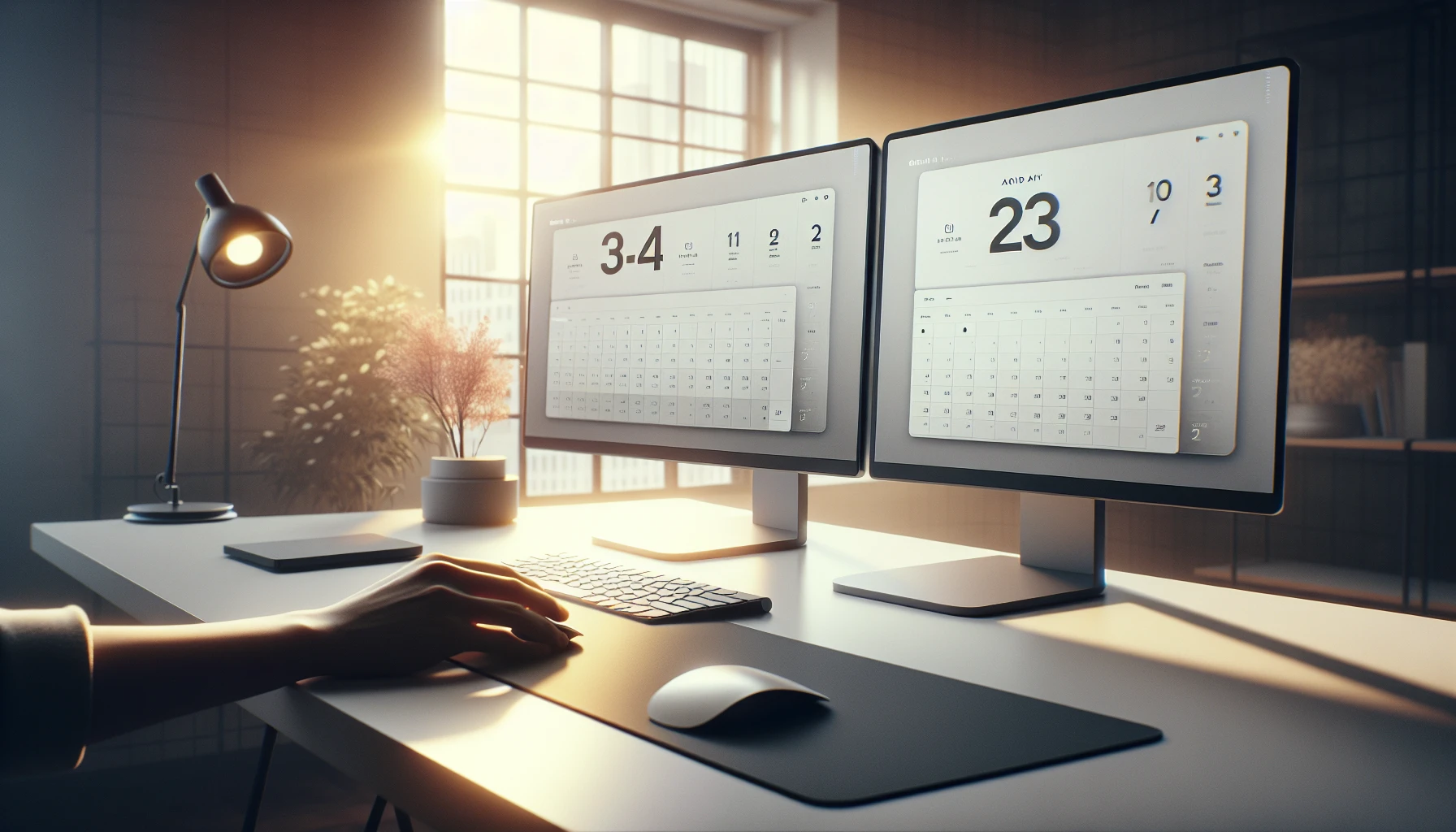· Ricardo Batista · 14 min read
How to Add Someone to Google Calendar - friendly guide
Step by step guide on adding people to Google Calendar using invites; set free/busy status and fix sync quirks for smoother planning.

Sharing your calendar with friends and colleagues using Gmail invites might seem confusing at first, yet it can be pretty manageable sometimes. This guide walks you step-by-step through share settings like see only free/busy and make changes - and also helps syncing with other apps, troubleshooting common issues, and overall making the process less overwhelming.
Key Takeaways
- Keep it simple: Adding someone to Google Calendar is just a few clicks – use Gmail invites and share settings
- Learn the basic options: Use “see only free/busy” for privacy and “make changes to events” when needed
- Syncing matters: Don’t forget to hook up your calendar with iOS and Outlook for all-around scheduling
- Our expertise shines here: We know how to automatically ping the attendees that arrive late to your meetings, ensuring your schedule stays on track
- Troubleshooting is key: When you run into issues, use guides and tools like Zapier and Meeting Reminders to keep things smooth even when it feels a bit messy
Adding People to Your Google Calendar with Gmail Invites and Sharing Settings
Google Calendar is a great tool to help you manage your time and meetings. One of its neat features is that you can invite others easily by sending a Gmail invite or by sharing your calendar with them. Using these methods not only makes scheduling simpler but also adds a layer of security and convenience if you want to control what others see. When you add someone to your calendar, you have options. You can allow others to only see your free or busy times, or you can give them permission to make changes. This flexibility is really useful, especially when meeting reminders are set up to automatically ping attendees who arrive late.
Overview of Gmail Invites vs. Sharing Settings
Gmail invites work by sending a notification directly to the invitee’s email. They get an invitation they can accept or decline, and if they accept, the event shows up on their own calendar. Sharing settings, on the other hand, let you share an entire calendar or specific events with people. When you set up sharing, you can choose settings like “See only free/busy” or “Make changes” depending on how much control you want to grant.
- Gmail invites are perfect for one-off meetings.
- Sharing settings work best when you’re managing recurring events or a whole schedule.
Balancing these options can help you smoothly manage meeting logistics, especially if you want systems that automatically remind attendees when they’re running late.
Why Meeting Reminders Matter
Meeting reminders are a handy tool that keeps everyone on track. With automated pings that alert attendees if they come in late, meetings tend to start on time. This helps keep the group engaged and reduces downtime. Setting up these reminders in your calendar event, along with a clear invitation or shared schedule, can mean fewer delays and more productivity. This is especially important if you use meeting reminders integrated with other tools like Google Cloud or AppSheet.
Step-by-step Guide to Adding People via Google Calendar Interface
The following section explains how to add people to an event using the Google Calendar interface. You can choose between sending Gmail invites and adjusting sharing settings, depending on your needs.
Setting Up Gmail Invites
If you prefer using Gmail invites, here’s a straightforward guide to help you:
- Open Google Calendar in your web browser.
- Click on the time slot when you want the meeting to begin.
- In the event details popup, enter the meeting title and location.
- Add a description if you like. In the description, you can also include notes about meeting reminders if you set them up to send an automatic ping to latecomers.
- Look for the “Add guests” field on the right-hand side, then type the email addresses of the people you want to invite.
- When you add an email, it will send an invitation automatically. You can add as many guests as you want.
- Use the option “Add conferencing” if you plan to use a virtual meeting link.
- Click “Save” and then “Send” to forward the invites.
Now, everyone on the guest list will receive an invite with the event details, and if you have meeting reminders or additional settings set up, they will be notified accordingly.
Adjusting Sharing Settings
For a more controlled approach, especially when you need to share your entire calendar:
- Open Google Calendar and look at the left panel.
- Find the calendar you want to share and click the three dots next to it.
- Select “Settings and sharing” from the menu.
- Under “Share with specific people,” click “Add people.”
- Enter the email address of the person you want to add.
- You have the choice between permissions:
- Choose “See only free/busy” if you want them to only know when you’re booked.
- Choose “Make changes” if you trust them to add or edit events.
- Click “Send” so the person gets a notification that they have access to your calendar.
By offering different access levels, you maintain control over your information. Meeting organizers often include meeting reminders in these shared events to ensure everyone gets the alert about delays or upcoming meetings.
Troubleshooting Invite Links and Sync Conflicts
Even with a reliable system like Google Calendar, issues may come up. Common challenges include problems with invite links not working properly or sync conflicts between calendars. Following a few steps can help reduce these issues.
Common Issues and Fixes
Sometimes, invite links may not work as expected. Here are some common issues and quick fixes:
- If the invite link fails:
- Verify that you are logged into the correct Google account.
- Check that your internet connection is stable.
- Refresh the calendar page or try a different browser.
- If there is a sync conflict:
- Check if the event has been duplicated.
- Remove the duplicate event and ensure only the primary event remains.
- Sometimes removing and re-adding the guest can solve the sync issue.
- For recurring events, ensure that the recurrence settings are properly configured for all invitees.
Implementing meeting reminders that notify attendees when they’re late can sometimes highlight sync issues if reminders don’t go off as expected. This alert can help you test if the invite functionality is working correctly.
External Resources for Troubleshooting
For further assistance with these common issues, you might check out help forums and support pages. Sites like Stack Overflow have a community of users discussing similar problems. Additionally, Google Calendar Help Center provides a lot of up-to-date troubleshooting information on invite links and sync conflicts.
Exploring Integrations with Third-party Tools
Google Calendar’s power extends when paired with third-party integrations, which can automate and simplify the process of adding and managing event attendees.
Zapier’s Auto-add Attendee Feature
Zapier is a tool that connects different apps together with automated workflows. One useful feature is auto-adding attendees to your calendar events, saving you time and ensuring everyone gets the proper notifications. Here’s how you can benefit from this:
- Set up a Zap that triggers when a new meeting is created in your calendar.
- Configure the Zap to automatically add specified attendees based on criteria like meeting topics or tags.
- The integration can also automatically add meeting reminders that ping late attendees.
- Explore the Zapier Help Center for detailed instructions on setting up these Zaps. This feature is especially useful if your schedule changes frequently and you want to keep everyone in the loop automatically.
Using Zapier’s auto-add attendee feature adds an extra layer of efficiency to your scheduling process, ensuring that no attendee is missed.
Syncing with iOS and Outlook
Many users work with multiple calendars and devices, and syncing Google Calendar with platforms like iOS or Outlook can be very beneficial. Here’s how you can keep your calendars in check:
- On iOS:
- Open the Settings app and navigate to the “Calendar” section.
- Add your Google account if it’s not already present.
- Ensure that Calendar sync is enabled.
- For more details, check out Apple’s support page.
- On Outlook:
- Go into Outlook’s settings and look for “Add Account.”
- Select the option to add a Google account.
- Follow the prompts to sync events between Google Calendar and Outlook.
- If you’re using meeting reminders, syncing your calendars ensures that messages like “pinging attendees who arrive late” are consistent across all platforms.
- Also, the Google Calendar Help Center offers updated guidance on syncing issues and how to keep your calendars accurately aligned.
For additional details on integrating calendars for seamless scheduling, you might check out How To Use Google Meets as it offers complementary advice on integrating your calendar with meeting tools.
Best Practices and Common Pitfalls When Adding Attendees
Managing meeting invites and calendar sharing properly takes a bit of planning. Using best practices can help you avoid common pitfalls, ensuring smooth scheduling and timely reminders.
Best Practices for Sharing and Invites
To get the most out of Google Calendar when adding attendees, consider these tips:
- Plan In Advance: Create and share your events with enough lead time for people to plan.
- Use Clear Titles and Descriptions: Include meeting reminders or any special instructions in the event details.
- Test Sync Settings: If you are using multiple calendars (like on iOS or Outlook), routinely check that the events are syncing correctly.
- Keep Permissions in Check: Regularly review who has access to your calendar to avoid unwanted changes.
- Configure Reminders: Set up automatic meeting reminders that can prompt attendees if they’re arriving late. This can be handled directly in Google Calendar or through integrated tools like Zapier.
Common Pitfalls and How to Avoid Them
Even when following best practices, there are some common mistakes that may trip you up. Here’s what to look out for:
- Overcomplicating Invites: Sometimes too many details in an invite can confuse guests. Keep it clear and concise.
- Incorrect Permissions: Double-check if you really want someone to have the ability to make changes. It might be better to stick with “See only free/busy” if you have any doubts.
- Failing to Sync: If you use multiple devices or calendars, missed syncs can lead to confusion. Regularly check and update your settings.
- Ignoring Reminders Setup: Forgetting to set up meeting reminder features can result in tardiness. Ensure that reminders are enabled and tested before the meeting.
- Over-reliance on Third-party Integrations: While tools like Zapier and AppSheet add convenience, make sure they are set up correctly. Sometimes the integration might fail, so always have a manual backup plan.
By keeping these points in mind, you can smooth out the scheduling process. Remember, the goal is to get everyone on time without hassles, and automated reminders play a key role in that.
Managing a busy schedule is easier when you leverage the flexible options within Google Calendar. Whether you choose to invite people through Gmail invites or share your calendar with specific settings, these methods help maintain order and encourage punctuality. The added benefit of meeting reminders ensures that even if people are running late, they receive a quick ping to join the meeting.
Taking advantage of integrations with tools like Zapier not only automates the add-attendee process but also ensures that the event details are consistent, especially when syncing across different devices. While syncing with platforms like iOS and Outlook might take a bit of extra setup in the beginning, the benefit is a fully integrated system where every attendee receives the same information regardless of the device they use.
For those looking to expand their automation capabilities further, using external code templates for personalized calendar links can save time. Every business or study group has its own requirements, so a little customization can go a long way. Platforms like Google Cloud and AppSheet provide flexible options to integrate your calendar data into custom applications, further streamlining your workflow.
A few key pointers to remember about meeting reminders: setting these up correctly ensures that participants get notified if they’re late, which can prevent delays and make your meetings run more efficiently. Automated messages, triggered at specific intervals, help safeguard the structure of your day.
If you got a bit mixed up with all the options (Gmail invites, sharing settings, syncing issues, integrations, etc.), just take it step by step. Start by setting up a test event, invite a few people, and adjust reminders as needed. That way you can tweak the system until it works perfectly for you. Small adjustments based on real-world use often lead to the best setups.
By following these guidelines—choosing the right permission settings, keeping events clear and concise, and carefully testing integrations—you can minimize problems down the road. Whether you’re planning casual meetups or important professional meetings, a bit of careful preparation goes a long way.
Each step of the process from creation to reminder works together to create a smooth, coordinated schedule. Getting used to the nuances of adding people to your calendar might require some practice, but the benefits in efficiency and punctuality are well worth the effort.
Conclusion
In this guide, we took a look at how to add someone to Google Calendar using Gmail invites and the sharing settings like free/busy and make changes. We walked through the basic steps and highlighted how using simple integrations, including third party tools from Zapier and basic troubleshooting tips, can really help smooth out any hiccups that come up along the way. We talked about syncing with iOS and Outlook as well, and even if it felt a bit disorganized at times, the key points remain clear - step by step instructions make the process easier and more intuitive.
Remember, the heart of this guide is to make your scheduling smoother and more streamlined. These methods help reduce confusion and save you time. And if you ever run into delays or missed alerts, consider how Meeting Reminders can automatically ping attendees that arrive late to your meetings. Take these insights and get started to improve your calendar management today, and don’t shy away from experimenting with these helpful tips, even when things get a little messy.
Related Posts
- How To Send Zoom Meeting Reminder To Participants
- How To Send Whatsapp Reminder
- How To Send A Meeting Reminder Email
Frequently Asked Questions (FAQs)
How do I add someone to Google Calendar using a Gmail invite?
You just need to open your Google Calendar, click on the event, and then add the person’s email in the “Guests” section. Once you do that a Gmail invitation is automatically sent to the attendee. It’s pretty simple and works well when your contacts are in your Gmail.
What does it mean when I share my calendar with “See only free/busy” access?
When you choose the “See only free/busy” option it means the other person will see just the time slots when you’re busy. They can’t see any details about your event which helps keep your event details private while still letting people know when you’re available.
How can I allow someone to make changes to my calendar events?
To let someone edit your calendar you have to click on your calendar’s settings, select “Share with specific people” and then choose “Make changes to events” from the dropdown menu. This way, they can add or edit events but, remember, share carefully since they get a bit of control over your schedule.
How do I sync my Google Calendar with iOS or Outlook?
Syncing Google Calendar with iOS or Outlook is a bit different for each app. For iOS, just go to your settings and add your Google account under Mail, Contacts, Calendars so your events show up on your iPhone. For Outlook, you might use the CalDAV option or copy your iCal link from Google Calendar and add it in the Outlook calendar settings. Both methods ensure you stay updated everywhere.
How does Automatically pinging attendees that arrive late to your meetings work?
This feature automatically reminds or alerts meeting participants if they’re running late. Tools like Meeting Reminders allow you to set up auto-pings so when someone is delayed they get a nudge. This is handy if you’re managing a busy schedule and want to keep meetings on track without manually calling out late arrivals.
Sources
- How to add a flight booked by someone else to Google calendar that includes tracking? - Web Applications Stack Exchange
- How to add a Google calendar shared with me, to my iCloud calendars - Ask Different
- How To Share a Google Calendar on Your iPhone | Clockwise
- See your Google Calendar in Outlook - Microsoft Support



